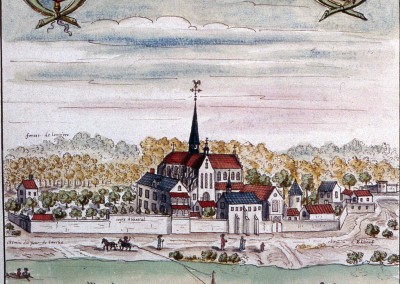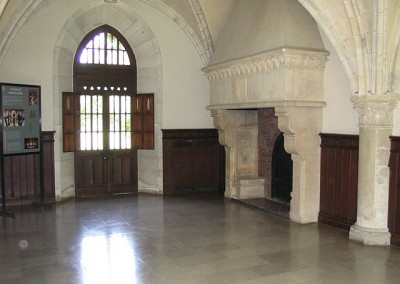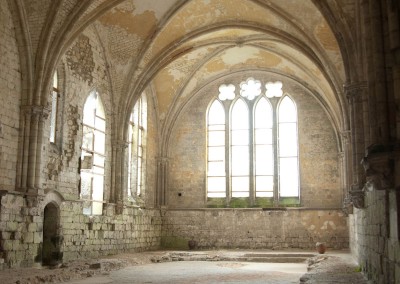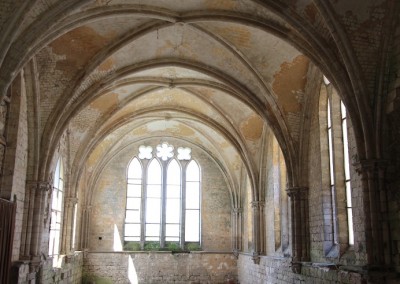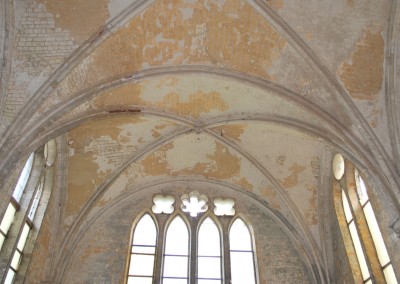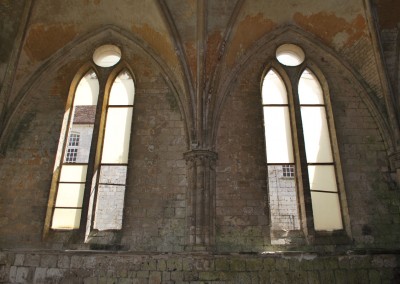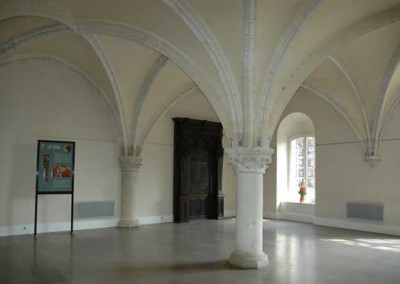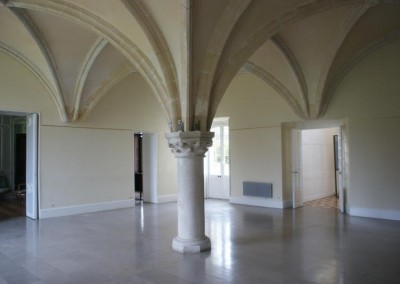Période Médiévale
MEDIEVAL PERIODLes origines :
L’ Abbaye Notre-Dame de Bonport est née de la volonté de Richard Cœur de Lion, roi d’Angleterre, durant l’été 1189. Ce sont des moines de l’abbaye Notre-Dame du Val, près de Paris, qui sont venus s’installer à la fin de l’année 1189 et ont entrepris les premières constructions. Bonport appartient à l’ordre de Cîteaux ; cet ordre religieux eut au XIIe siècle un rayonnement culturel et architectural considérable en Europe.
La charte originale de la fondation de Bonport est perdue, mais grâce aux nombreuses confirmations des donations, nous savons que Richard l’avait dotée de biens très importants en terres, vignes, droits de pêche, forêts, moulins, etc.
L’apogée de l’abbaye (1200-1304) :
La construction des bâtiments monastiques a dû intervenir dans le premier quart du XIIIe siècle, sous l’abbatiat de Gérard, comme le montre l’architecture du splendide réfectoire, de la salle capitulaire et du scriptorium. La rapidité des travaux et l’utilisation systématique de la pierre de taille sont encore une preuve de la richesse de Bonport.
La Guerre de Cent Ans et le déclin :
Le XIVe siècle annonce une série de conflits dont l’abbaye va souffrir. Sa position stratégique sur la Seine, aux portes de Pont-de-l’Arche, va l’exposer aux combats de la Guerre de Cent Ans qui commence et qui va ravager la Normandie.
Origins:
The abbey Our Lady of Bonport was a decision of Richard the Lion Heart during summer 1189. The monks from the abbey Our Lady of Val, next to Paris, decided to move in at the end of 1189 and started the first constructions.
Bonport belongs to the Cîteaux order; this religious order had an important cultural and architectural influence in Europe during the 12th century.
The original charter of the foundation of Bonport is lost, but because of many donations, we know that Richard endowed the abbey with fields, vines, forests, mills…
The abbey apogee (1200-1304):
The construction of cloistered buildings started in the first quarter of the 12th century, under the abbot Gerard. The architecture of the refectory, of the chapter house and of the scriptorium confirms that.
The rapidity of the construction and the utilization of cut stone show the abbey’s richness.
The Hundred Years War and the decline:
The 14th century announced a lot of conflicts for the abbey. Its strategic position on the river Seine exposed it to the Hundred Years War battles that began at this period.

